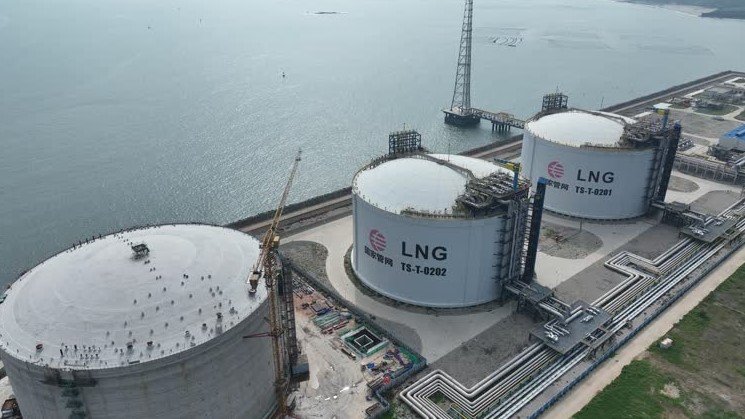Industry and power sectors drive growth as global consumption heads toward record highs, says energy agency
The Middle East is on track to become one of the fastest-growing gas consumers in the world, with demand in the region projected to surge 3.5% in 2026, according to a new analysis from the International Energy Agency (IEA). That’s a sharp uptick from the 2% growth expected this year—and a clear sign that the region’s energy appetite is only intensifying.
The IEA’s report, published this week, also forecasts that global gas consumption will hit an all-time high in 2026, buoyed by recovering demand in the Asia-Pacific, and growing reliance on natural gas in both emerging and industrialized economies.
For Middle Eastern countries juggling economic growth, electricity needs, and industrial expansion, gas is looking like the go-to fuel—at least for now.
Gas Demand: No Slowdown in Sight
While much of the world is still mulling energy transitions, the Middle East’s gas story is moving in the opposite direction. Power plants, steel factories, and petrochemical complexes continue to lean on gas for its cost-efficiency and availability.
The IEA’s latest figures offer a clear snapshot of what’s happening:
• 2025 forecast: +2% gas demand growth in Middle East and Africa
• 2026 forecast: +3.5% for the same region
• Global demand: Up 1.3% in 2025, and 2% in 2026—marking a new consumption record
Keisuke Sadamori, IEA’s director of energy markets and security, didn’t mince words: “The backdrop for global gas markets is shifting as we enter the second half of this year and look towards 2026.”
The catalyst? An incoming flood of liquefied natural gas (LNG) supply expected to ease global market tightness—and lower prices.

LNG Boom Set to Reshape Supply Landscape
In fact, a major part of this demand surge is tied to what’s happening on the supply side. A new wave of LNG capacity is coming online between now and 2026, with mega-projects in the U.S., Qatar, and Mozambique leading the charge.
This additional capacity is set to reshape trade flows and pricing dynamics. For countries in the Middle East, which already boast extensive gas infrastructure, the timing couldn’t be better.
And for importers—particularly in North Africa and the Levant—it means cheaper LNG might be within easier reach.
Here’s how some regional producers and consumers are positioned:
| Country | Gas Demand Trend | Notes |
|---|---|---|
| Saudi Arabia | Rising | Using more gas to displace oil in power generation |
| UAE | Stable–Rising | Expanding LNG export capacity; also boosting domestic use |
| Egypt | Volatile | Struggling with supply constraints despite demand |
| Iraq | Rising | Heavy reliance on Iranian gas, but eyeing local development |
| Oman | Export-focused | Leveraging LNG exports for fiscal stability |
One Gulf-based analyst said, “This is a critical window. The LNG wave gives the region flexibility—either to export or to fill shortfalls affordably.”
The Role of Industry and Electricity
Electricity demand in the Gulf spikes every summer, and air conditioning alone eats up a sizable chunk of total power usage. In response, governments are racing to fire up more gas-powered plants, especially as they aim to move away from burning oil for power.
But the industrial sector might be an even bigger driver.
Petrochemical production, aluminum smelting, and fertilizer manufacturing are all gas-heavy processes. And several countries—especially Saudi Arabia and Qatar—are scaling up these industries under their national development strategies.
In 2026, these combined needs are expected to contribute more than half of the projected 3.5% increase in Middle East gas demand.
IEA notes that many governments are also turning to gas to bridge the transition toward cleaner energy, especially as solar and wind still grapple with intermittency issues.
A Delicate Balancing Act for Policymakers
Rising gas demand isn’t without its risks, though.
• Over-reliance on gas imports can expose smaller economies to price shocks
• Geopolitical issues—like the Strait of Hormuz’s vulnerability—add supply risk
• Environmental groups argue the region’s gas push slows down clean energy transition
Some policymakers are trying to hedge. The UAE, for instance, has rolled out one of the region’s most aggressive solar power plans while simultaneously ramping up gas projects.
Others, like Egypt, are caught in a tough spot—demand is rising, but supply is sputtering.
One regional energy economist said, “The danger is getting stuck in the middle. Too much gas infrastructure and too little diversification. The real trick is flexibility.”
What Happens After 2026?
The IEA’s long-term outlook suggests gas demand growth will eventually taper off—especially if renewables scale faster and electrification picks up speed.
But for the Middle East, that’s a later problem.
For now, energy planners are locking in contracts, building pipelines, and upgrading grids to accommodate what looks like at least a few more years of strong gas demand.
In some ways, it’s a race against time—boosting supply to meet industrial and residential needs, without missing the global shift toward decarbonization.
One thing seems clear: 2026 will be a pivotal year for gas in the Middle East.
